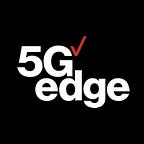Welcome to the Verizon 5G Edge blog!
Following the recent launch of Verizon 5G Edge in partnership with Amazon Web Services (AWS), we started this blog to explore issues that impact application experience in this new world of 5G, distributed architectures and distributed computing.
Sep 22, 2020 | Srini Kalapala— Vice President, Technology Strategy, Innovation, and Cloud at Verizon
Following the recent launch of Verizon 5G Edge in partnership with Amazon Web Services (AWS), we started this blog to explore issues that impact application experience in this new world of 5G, distributed architectures and distributed computing.
Here are some of the topics we’ll be writing about in the weeks to come:
- New 5G Edge service announcements and regional expansions
- New development tools to support applications at the network edge
- Interviews with our network engineers to share tips and tricks for effective edge architecture and development best practices
- Case studies from our latest 5G Edge customers
The 5G Edge journey in a nutshell
Last December, we announced our partnership with Amazon Web Services (AWS) and gave you a sneak preview of the power of AWS Wavelength at the edge of the Verizon 5G Ultra Wideband network.
Since then, we’ve been collaborating on trials with our customers, including Zixi, CrowdVision and YBVR, to put 5G Edge to work. We encourage you to watch highlights from their success in trialing applications at the network edge.
5G Edge is now available in five cities.
Today, we’re happy to announce that 5G Edge and AWS Wavelength are now generally available in Boston and the Bay Area, as well as three new cities: Atlanta, New York, and Washington, DC!
To use Wavelength, you can extend your VPC to include a Wavelength Zone and then create resources such as EC2 instances, ECS/EKS clusters, or EBS volumes. You can also leverage CloudFormation and Auto Scaling to automate your edge deployments.
Verizon’s 5G Ultra Wideband network in action
Verizon’s 5G Ultra Wideband network is the perfect complement to the AWS cloud. 5G Edge optimizes AWS compute resources to reside geographically closer to users than ever before, via Wavelength Zones. Similar to Availability Zones, Wavelength Zones feature AWS compute and storage services and seamlessly access the breadth of AWS services in the region that you leverage, such as Amazon S3, Amazon RDS, and Amazon DynamoDB.
But why should developers leverage 5G? Here are some scenarios to pique your interest.
You have deployed a computer vision workload to support near real-time anomaly detection for a manufacturing plant. In a 5G environment, a single UE (i.e., mobile client) can experience throughput of well over 1 Gbps. Simply put, in the same time that a 4G-connected device can send a single high-res image for anomaly detection to a Wavelength Zone, a 5G-connected device could send 25 of them — without altering a single line of your application code.
Even beyond throughput and data volume, 5G presents significant benefits to developers’ end-to-end latency of their application. In a computer vision use case, a 5G device would be able to upload a 1MB image approximately 25 times faster than a 4G device.
So how is our 5G Ultra Wideband network built right for next-gen mobile applications?
- Fewer software work-arounds: Developers could avoid masking application latency with animation and other software-driven workarounds.
- Seamless usage of edge compute from existing VPCs: Within a Wavelength Zone, developers can leverage the carrier gateway to easily connect their resources to our 5G network. To learn more about the carrier gateway, visit the AWS Wavelength FAQs.
- Compute resources closer to end-users: Consider the network traffic between a smartphone and a device. With 5G Edge, at the first point the traffic anchors to an IP address, you can access compute and storage resources to realize low latency for mobile devices.
- Flexible infrastructure elasticity: Using AWS Auto Scaling and Verizon ThingSpace, you can scale your edge resources based on consumption, traffic, or even user devices. In fact, you can build applications on 5G Edge supporting both 4G and 5G mobile devices. To learn more about monitoring your mobile/IoT device fleet, visit the ThingSpace docs.
Simply put, 5G Edge allows developers to leverage advanced characteristics of the Verizon network without having to delve into the complexities of network operation and management. As we continue to evolve and innovate on our 5G network, those new capabilities, such as low latency, massive throughput and network slicing, will become available to developers in a more seamless manner.
Build on 5G Edge today.
Is your product or prototype ready for 5G Ultra Wideband? Trial it on our live 5G Ultra Wideband network by connecting with our 5G Labs team in a city near you.
The 5G Labs are collaborating with startups, academia and enterprise teams to build a 5G-powered world. We work on 5G trials, hackathons, industry partnerships, prototyping challenges and more. Whether your interest is in developing a 5G Edge prototype, learning about current 5G Edge solutions or participating in a 5G Edge challenge (coming soon!), there’s something there for you. To learn more about the 5G Labs, check out our latest lineup of virtual events.
Get Started with 5G Edge Today.
Want to stay in touch with our 5G Edge team? Be sure to subscribe to our monthly 5G Edge Community Newsletter. We’ll cover the latest product updates, 5G Edge announcements, developer events and more.
To learn more about AWS Wavelength, visit the Getting Started guide, or check out the next AWS Wavelength Immersion Day in a city near you.
